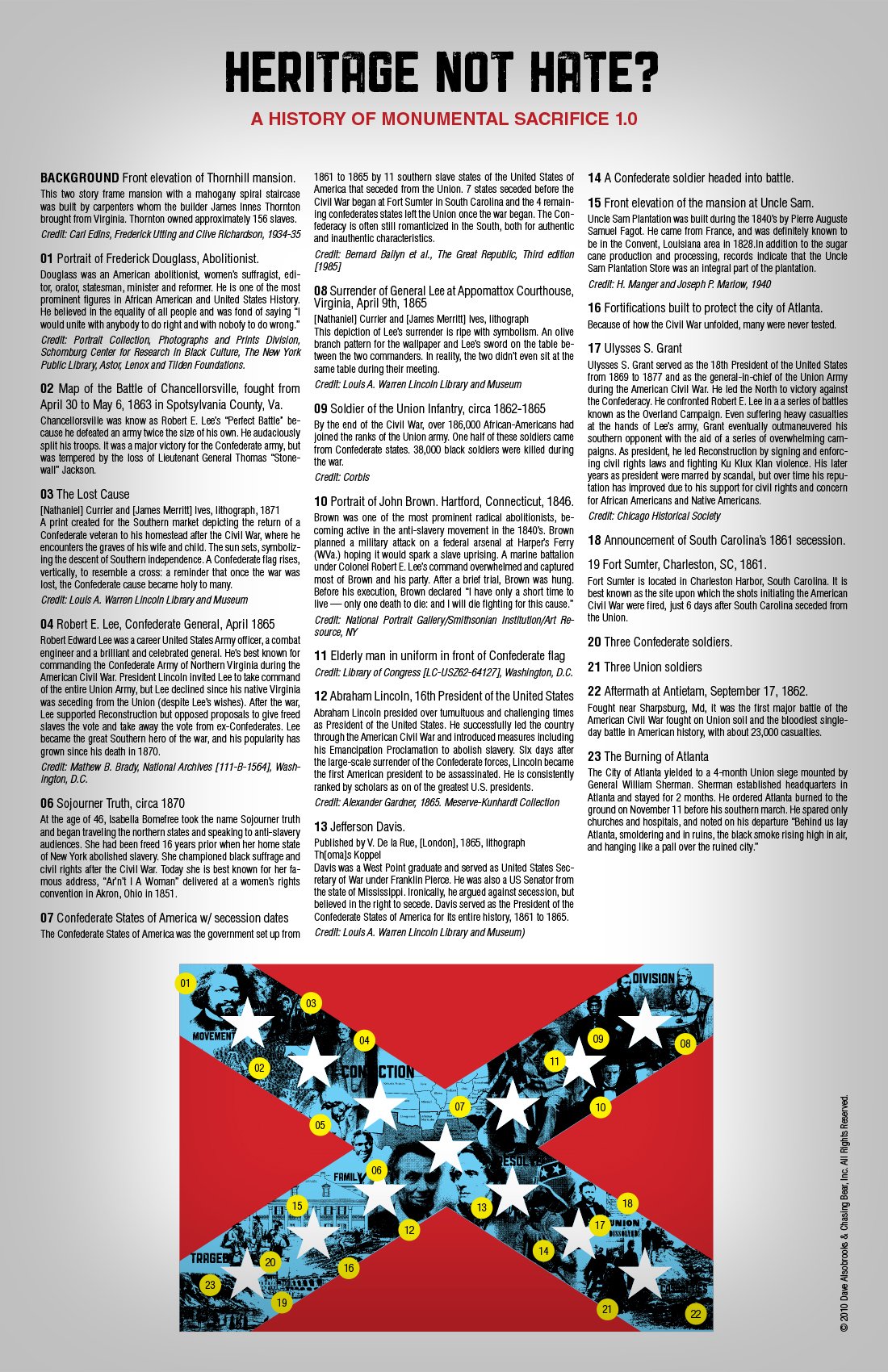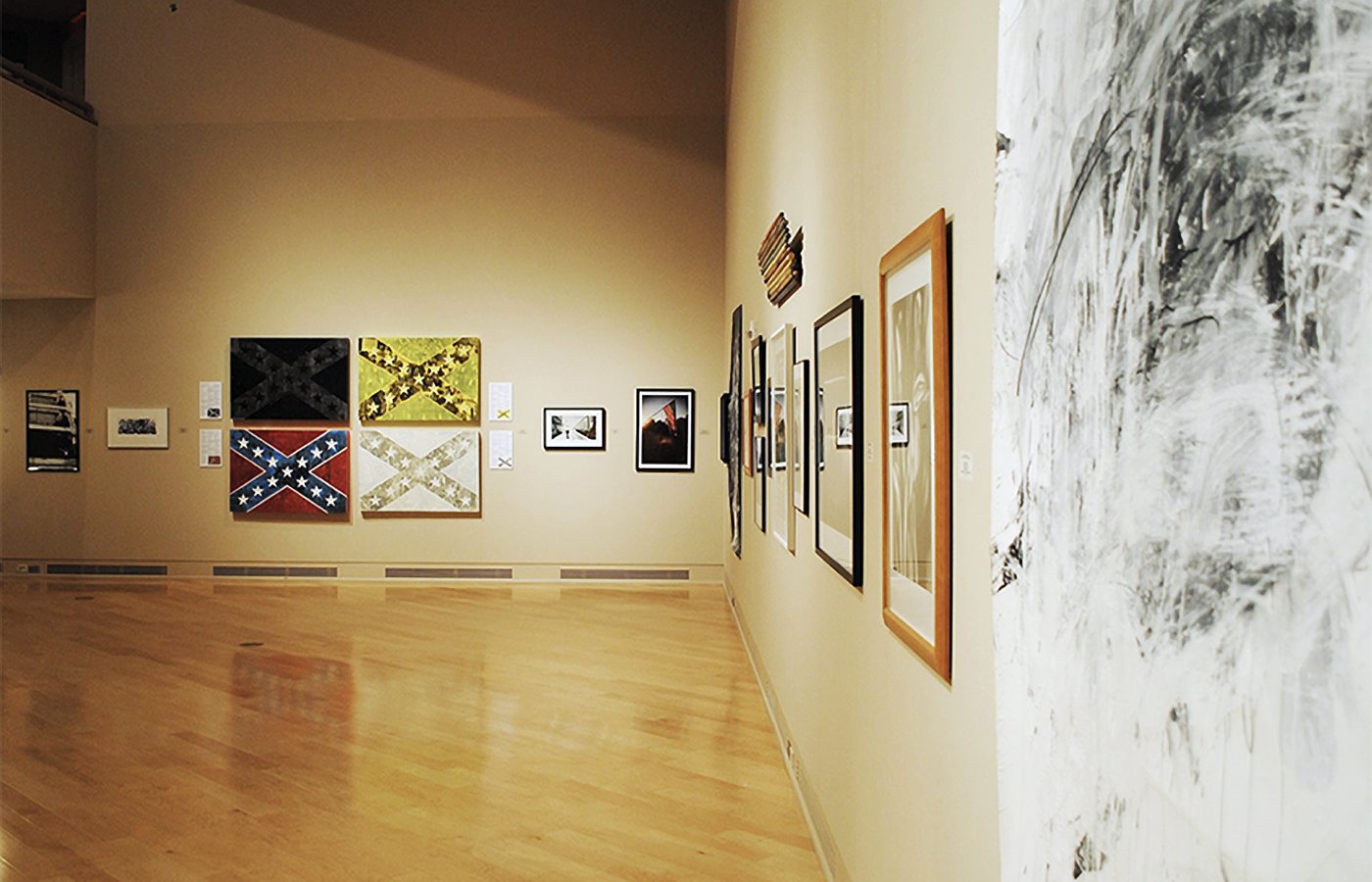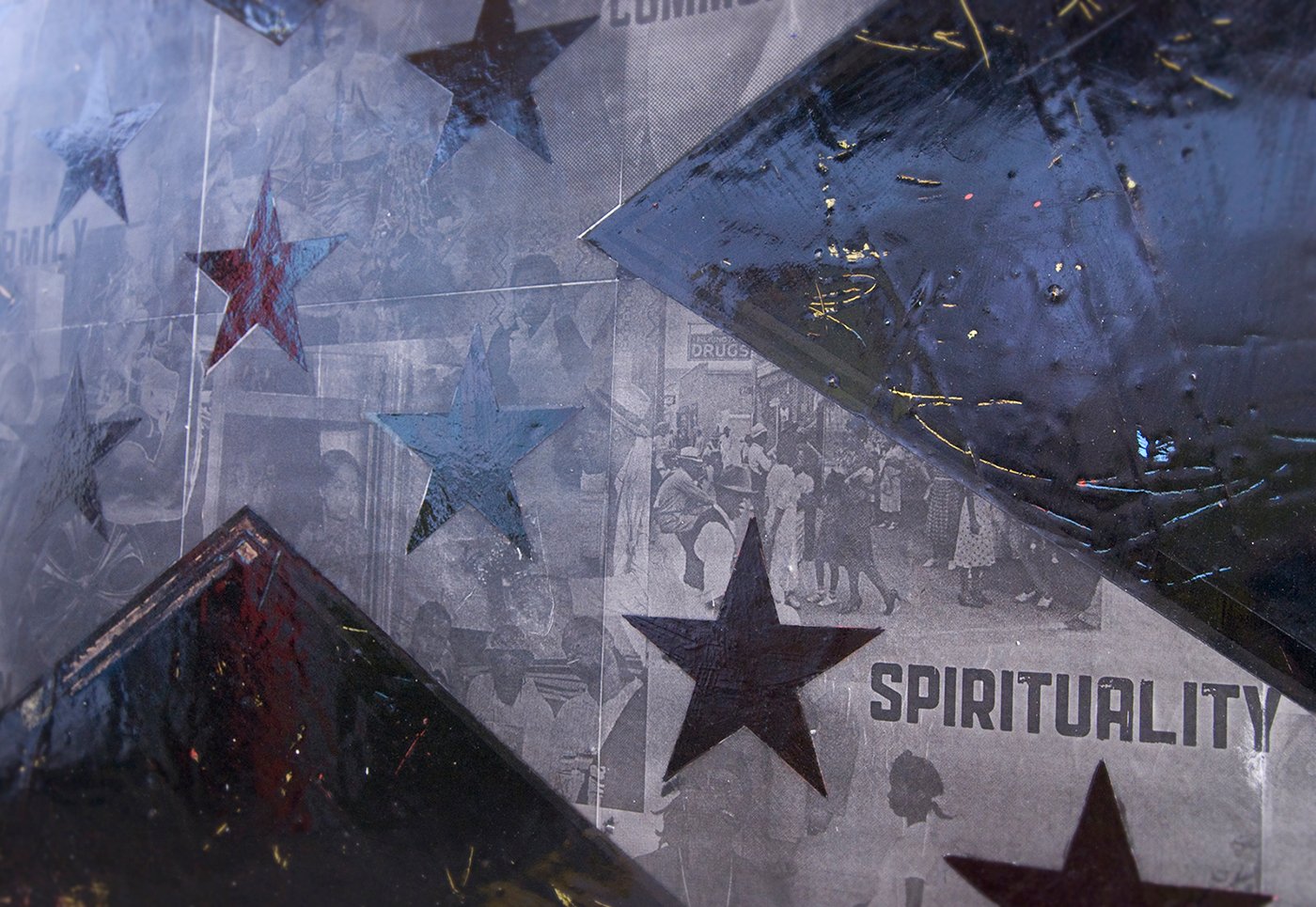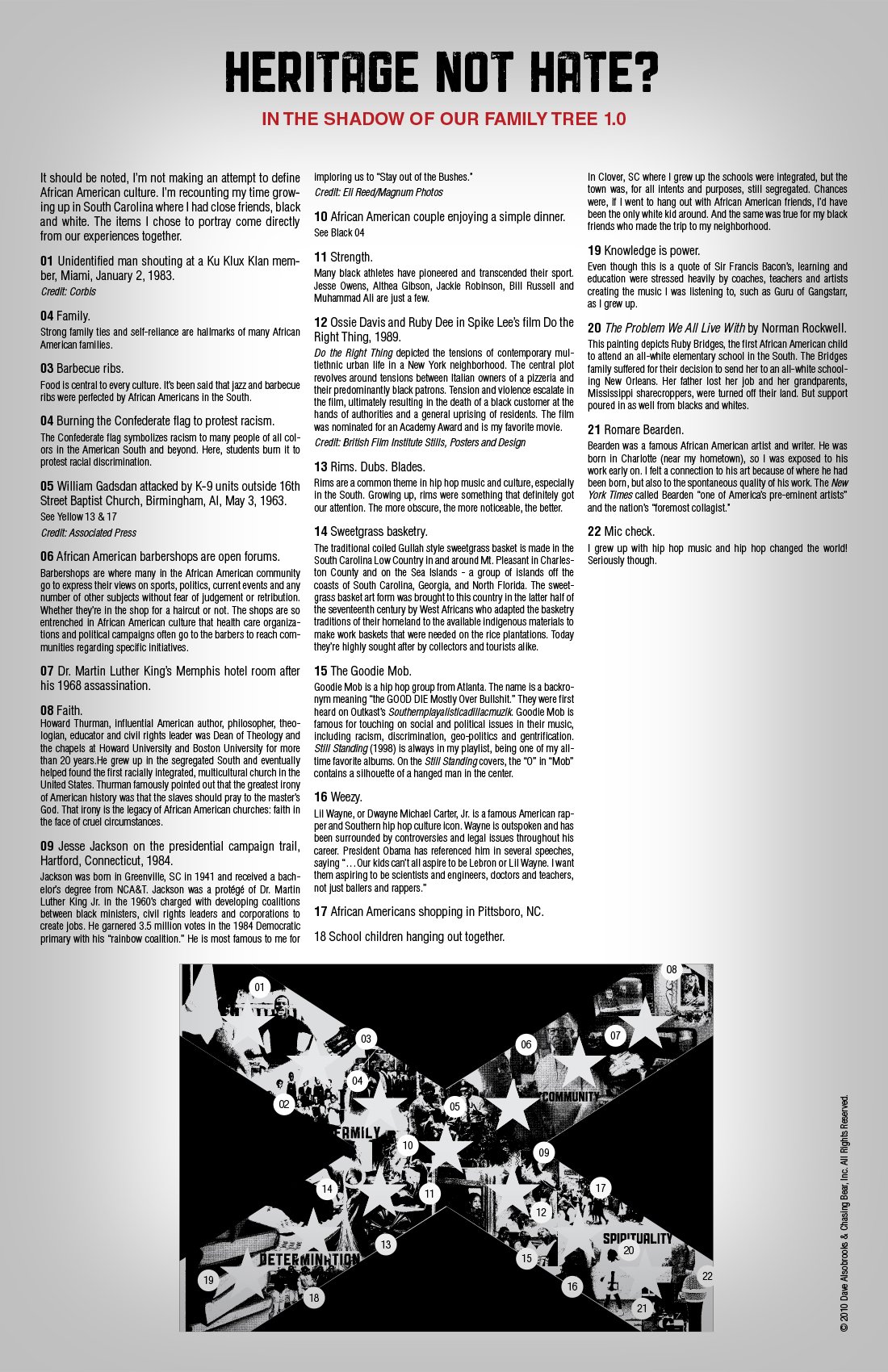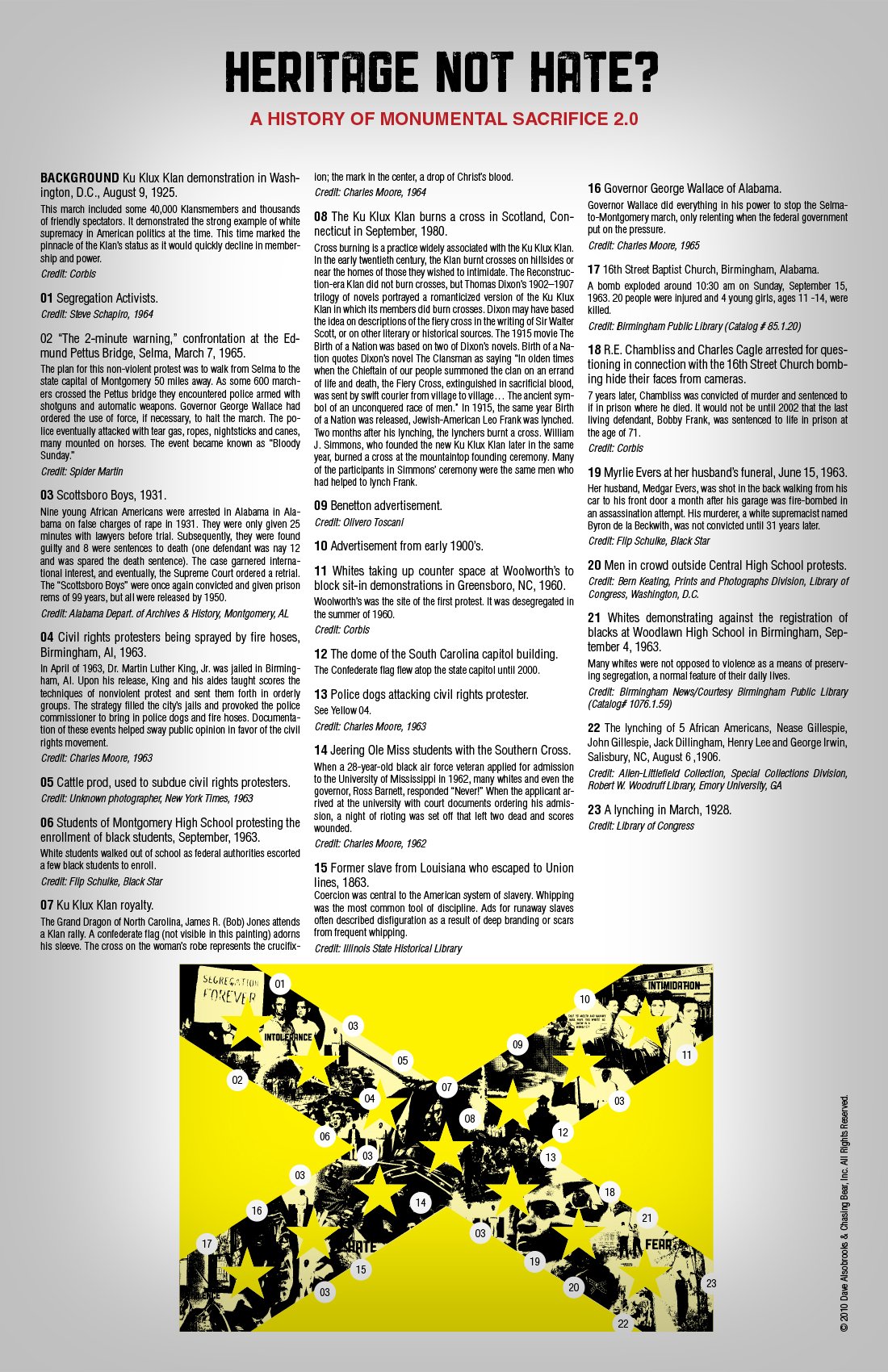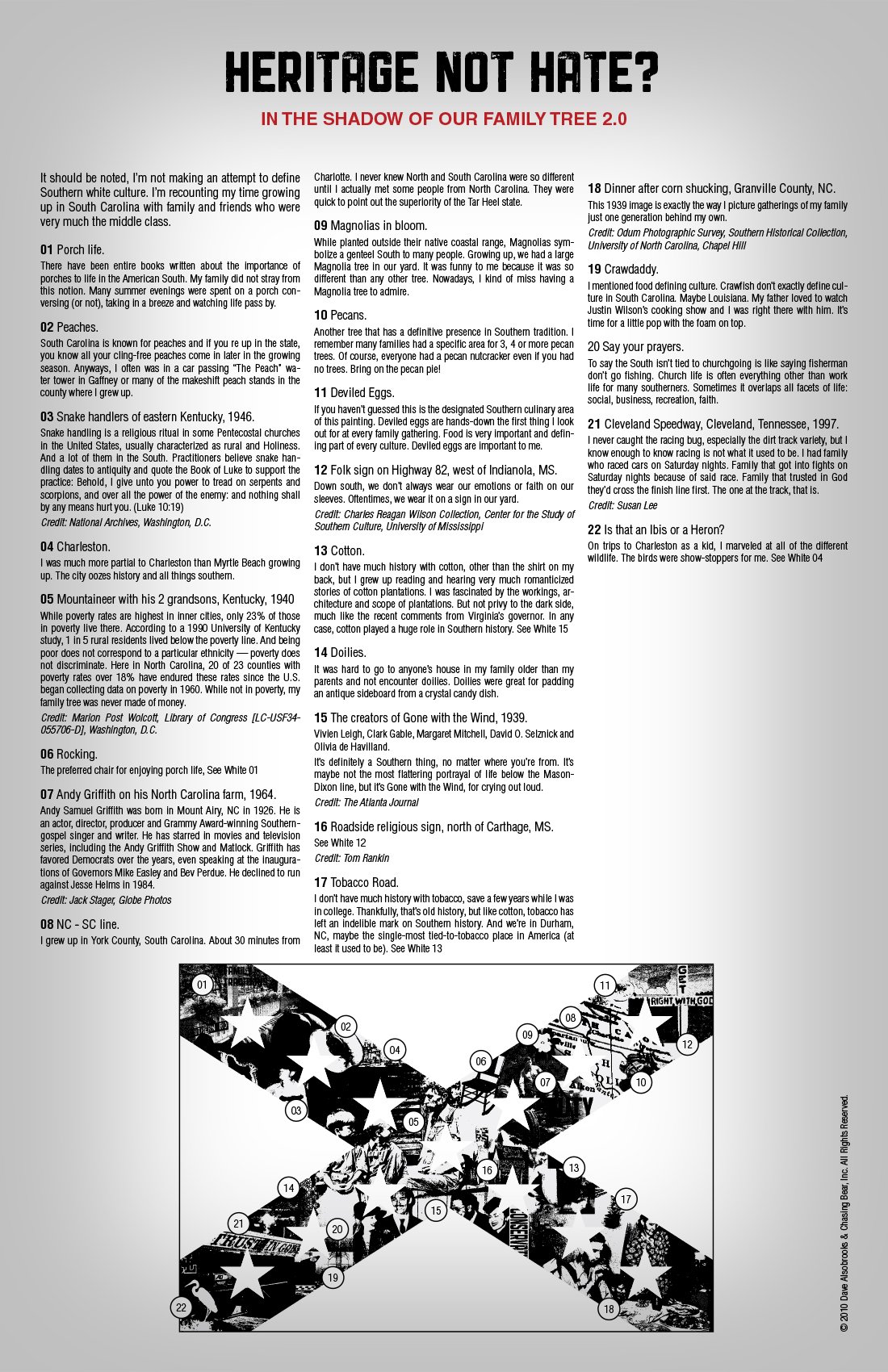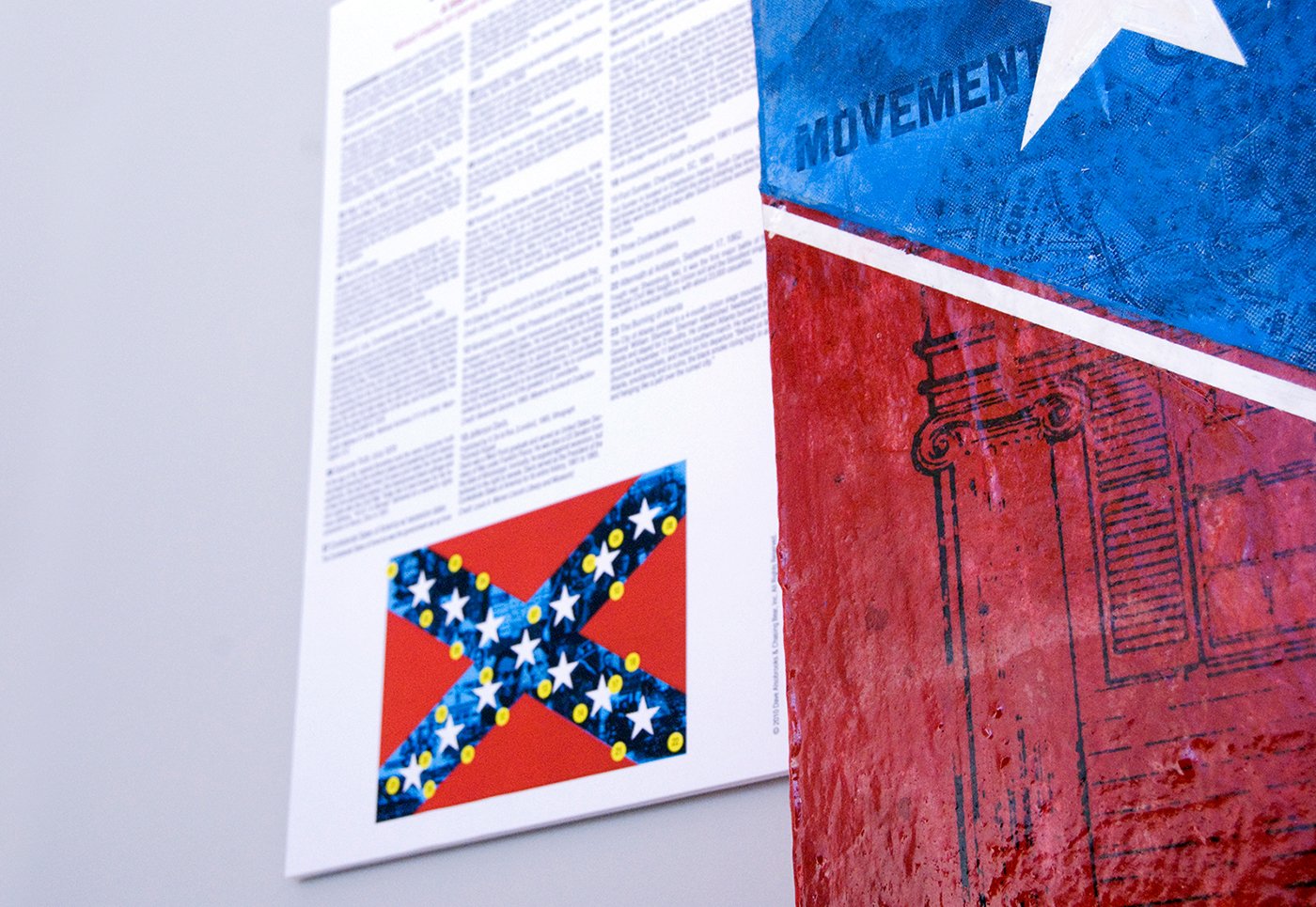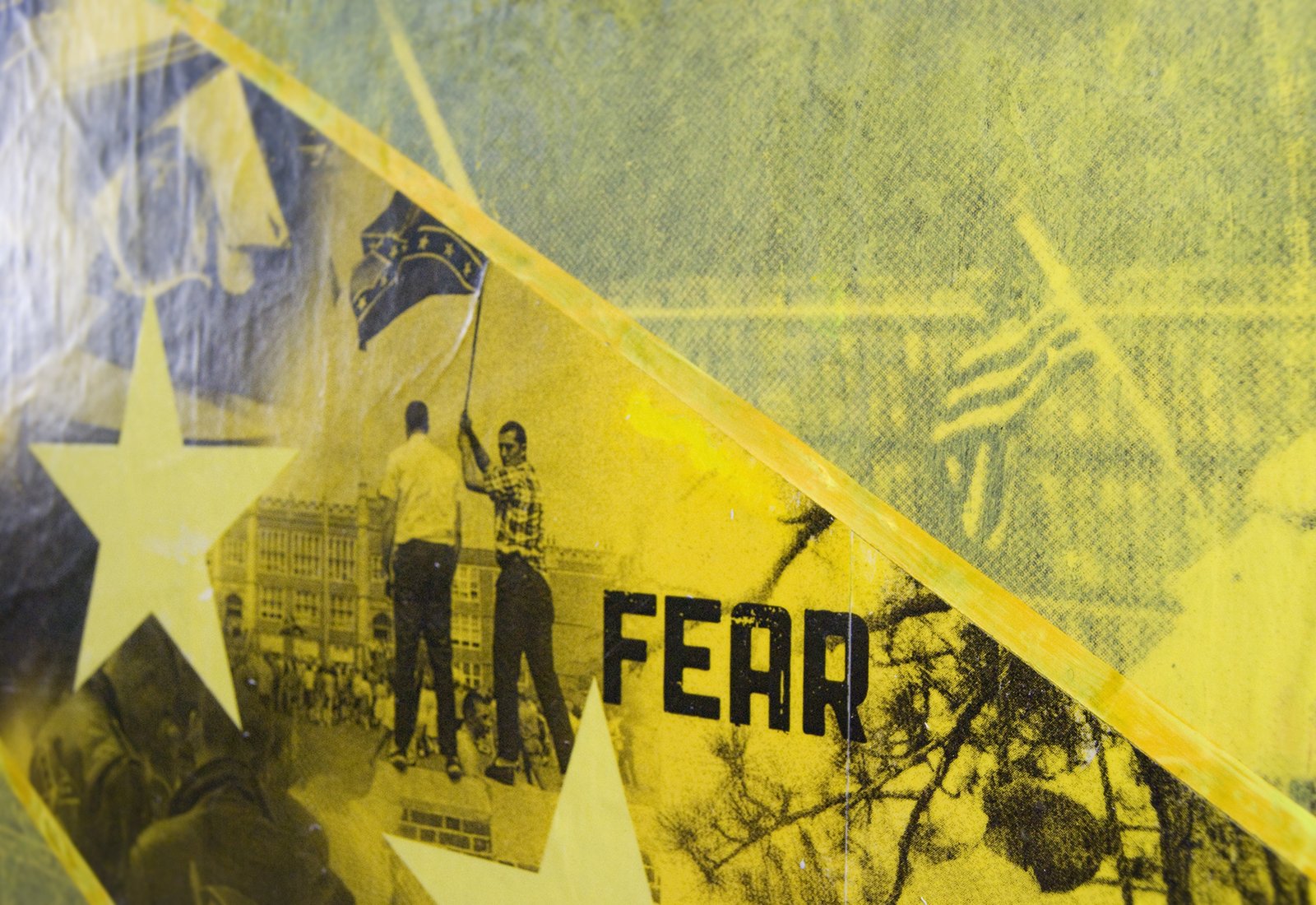
Heritage, Not Hate?
Medium: Mixed media on panel with collage and image transfer
Dimensions: Main Panels: 35” x 41”; Info Panels: 17” x 11”; Installation: 39” x 116”
Collection: Private
Awards: 2011 Halpert Biennial at Appalachian State University in Boone, NC — Juror, Steven Matijcio, then Curator at the Southeastern Center for Contemporary Art in Winston-Salem, NC
Let me start by saying I'm not pretending to answer age-old questions about race relations with paintings of the Confederate flag—but you may have guessed as much. I'm simply recounting my experience of growing up in South Carolina. Like the stark graphic lines of the Confederate flag, there were distinct lines in life: geographic and cultural, acceptable and punishable.
The Confederate flag has been a point of contention in South Carolina for generations. It has long been a prominent icon, appearing on license plates, shirts, tattoos, bumper stickers, and keychains among other items. The "Southern Cross" flew atop the state's capitol building from 1962 until 2000. This sparked intense debate between those who fought for its removal and those who defended its public display in Columbia. Having known people deeply invested on both sides of this issue, I gained insight into their competing perspectives.
During this period, the phrase "Heritage, not hate" gained prominence as the “politically correct” slogan associated with preserving the Confederate flag. Paraphrased: the flag held no hateful connotations—rather, its public display merely honored history, heritage, and a Southern way of life.
Heritage, not hate? To whose or what heritage are we referring?
Could this powerful symbol represent only the sacrifices of those fighting to preserve their way of life? Or what if it simply reflected family traditions passed down through generations, stripped of their historical missteps? What if it were transformed into a defiant emblem of perseverance and cultural vitality? Or conversely, what if we saw in it only its darkest historical associations?
More questions, I admit.
A review by Lori Waxman:
Is there a more loaded American symbol than the confederate flag? I suppose the greenback gives it a run for its money, bad pun intended, but the sheer indispensability of money will always trump any concerns with its history or the current state of American, i.e. world, capitalism. Not so the former flag of the southern United States, whose usefulness today seems more or less limited to 1) an unapologetic nostalgia for the way things used to be, and 2) a criticism of the way things used to be. “The way things used to be” in this case refers to a history of slavery, segregation and racist violence directed toward African Americans. What artist Dave Alsobrooks has done in a series of four collage canvases based on the design of the flag is, oddly enough, to acknowledge both of these possibilities. One white and one black canvas each convey a nostalgic picture of, respectively, conservative white and black family values. On their own, these stand as strikingly uncritical visions of a divided south. Displayed alongside a second pair of pictures, however, the tone changes. Here is the awful history of it all, classic red and blue for Civil War era challenges, yellow for Civil Rights era ones. Taken apart, a limited, almost clichéd history of the south presents itself. But taken together, a complex version emerges.
= = = = = = =
Lori Waxman has been the primary freelance art critic of the Chicago Tribune since 2009. Since 2022 she has also had a monthly column in Hyperallergic. She teaches at the School of the Art Institute of Chicago and has a Ph.D. in art history from the Institute of Fine Arts in New York. Her "60 wrd/min art critic" performance has been exhibited in dOCUMENTA (13) and a dozen cities across the U.S. She has received a Warhol Foundation Arts Writers Grant and a 2018 Rabkin Foundation award, and is the author of Keep Walking Intently (Sternberg Press), a history of walking as an art form.
